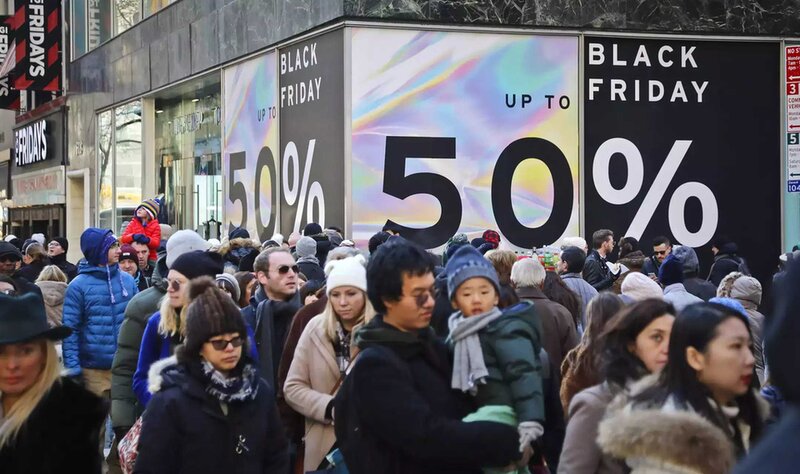

Mastering the Customer Journey: Strategic Insights for Holiday Success
The holidays are coming—and as they approach, many retailers are cautiously optimistic. The opportunities (and the stakes) of the festive season are high. There’s heightened consumer activity to leverage and increased competitor activity to manage.
Amidst all that, the challenge is clear: How can you ensure that your customer journey is both a gift to your audience and poised to help you reach your goals?
After all, a sound, cohesive, and effective approach to your customer journey is key for holiday success. Here’s how to master the customer journey and make the most of this upcoming holiday season.
For the sake of clarity and efficiency in the face of a busy end-of-year sprint, we’ll simplify the customer journey into four key stages: Awareness, Interest, Purchase, and Post-Purchase.
When you’re guiding customers smoothly through each phase, here’s what we recommend focusing on:
- Awareness: At this stage, your mission is to attract potential customers (and, in doing so, build their awareness). Especially during the holidays, this means cutting through the noise with memorable messaging.
- Interest: Once you’ve captured a customer’s attention, your next goal is to nurture their interest. This is where personalization begins to play a critical role.
For example, by segmenting your audience by demographics, behavior, or preferences, you can create personalized website experiences and targeted email campaigns designed to resonate more deeply with each group. This level of personalization can increase interest, engagement, and conversion rates during the holiday season. - Purchase: Without a cohesive strategy, it’s easy for this stage to feel disjointed. At this stage, we have solid insight into a potential customer’s level of interest based upon interaction with your ad campaigns, shopping behavior on your website, or even abandoned shopping carts—all of which can be instrumental in closing the sale.
- Post-Purchase: Your customer journey doesn’t end at the sale! To boost loyalty and potentially fuel repeat purchases, creating customer-nurturing assets or experiences such as follow-up emails, personalized offers, and loyalty rewards can keep customers engaged long after their initial purchase.
(This applies to the post-holiday season, too! In 2022, U.S. consumers spent nearly $50 billion after December 25. Focus on that post-transaction, longer-term nurturing strategy.)
These stages may sound simple, but if you provide stellar customer experiences through each step, you may be well on your way to winning the holidays.
Unfortunately, there may be a challenge or two to tackle first.
The 4 Stages of the Customer Journey: Simplified for Success
This holiday season, focus on breaking down silos and fostering collaboration across departments, ensuring a unified strategy that enhances the overall customer experience.
- Darren Waddell, EVP, Sales & Marketing, Innervate


Mario Peshev is the CEO of DevriX, a global WordPress agency providing scalable, long-term technical partnerships along with marketing, and business consulting. Serving as a resource to retail and e-commerce entrepreneurs, Peshev is the author of the new bestselling Amazon book, MBA Disrupted: Your Step-By-Step Guide to Bootstrapping $1M+ Digital Businesses.
One big obstacle standing between most leaders and a high-quality customer is the presence of operational silos within organizations. Different teams—marketing, sales, or customer service—often work in isolation.
This leads to fragmented customer experiences (among other repercussions, such as redundant work and avoidable miscommunications).
It’s time to de-silo your systems and personnel. Yes, now, before the holidays. There’s no better time! Executives must champion a unified strategy that integrates efforts across departments.
This may take extra time and resources, but fortunately, tools exist to streamline processes and give you bandwidth.
Using AI and automation during the holidays can help you seize the season’s opportunities without succumbing to the requisite stress.
How?
Here’s just one example: AI-driven recommendation engines can dynamically adjust your offers based on real-time data. This ensures that your customers are seeing the most relevant products and promotions (and not, say, sunscreen promotions in December).
Automation, on the other hand, gives your team the power to execute the delivery of these strategic elements at scale. By automating routine tasks like creative production or approval workflows, your teams can focus on higher-level strategic work, such as refining the customer journey and optimizing performance across channels.
Breaking Down Silos for a Unified Strategy
Leveraging AI and Automation: The Strategic Edge

This holiday season, focus on breaking down silos and fostering collaboration across departments. Encourage your teams to think strategically about how each stage of the customer journey contributes to the overall experience, and leverage AI and automation to enhance efficiency and effectiveness.
By taking these steps, you’ll not only improve the customer journey but also set your organization up for long-term success—which, when you think about it, is truly the gift that will keep on giving.



